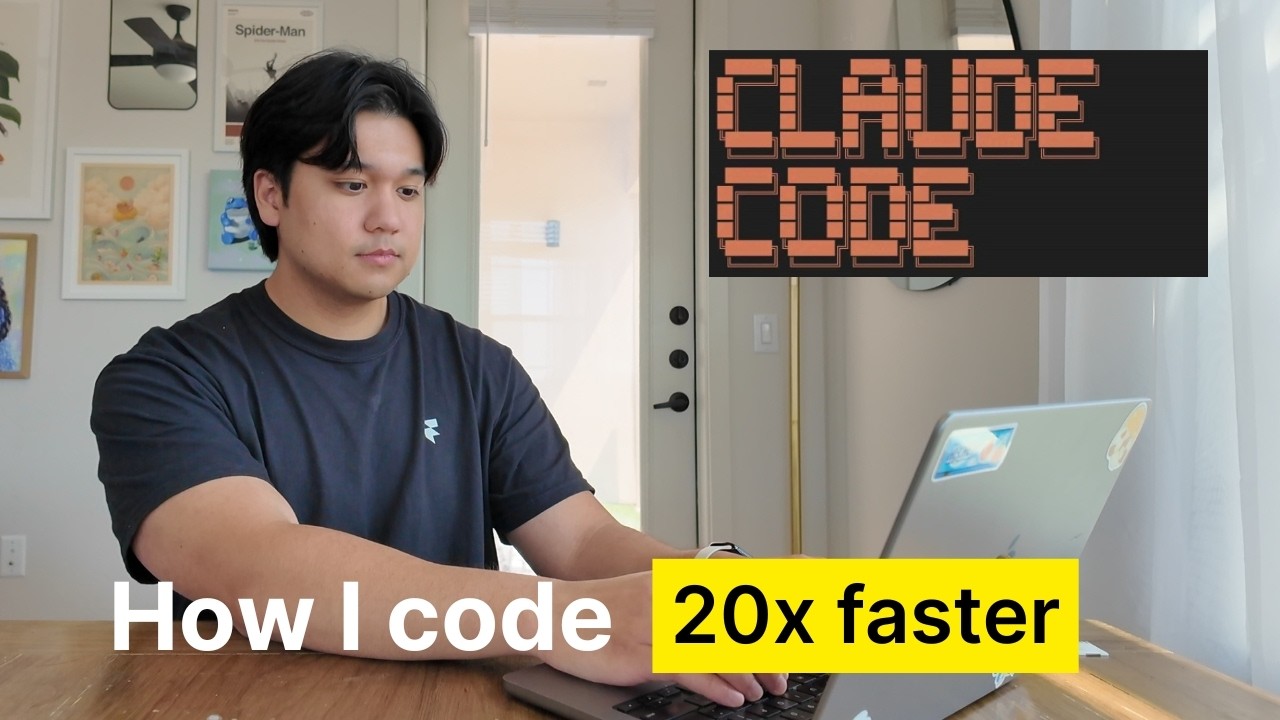In this updated tutorial, Chris explains why he switched from Cursor to Claude Code for AI-assisted coding, highlighting Claude Code’s superior problem-solving abilities, plan mode feature, and support for rich context inputs, which enhance development efficiency despite its higher cost. He recommends Claude Code for professional developers seeking productivity gains, while suggesting Cursor remains a better option for hobbyists due to affordability.
In this updated AI coding workflow tutorial, Chris, a productivity app developer, shares why he switched from using Cursor and its AI agents to Claude Code for his development work. Although Cursor has been a popular choice among developers for over a year, Chris found Claude Code, a terminal-based coding agent by Anthropic, to be significantly more effective in handling complex coding tasks. He highlights that Claude Code excels at thinking through problems and generating better solutions faster than Cursor, even when Cursor uses powerful models like Claude Opus for Max.
Chris explains his workflow with Claude Code, which involves running the claude command in the terminal to interact with the AI. A key feature he uses is “plan mode,” where Claude Code first thinks through a problem and outlines a plan before making any code changes. This approach allows him to review and approve the plan before execution, reducing errors. He also emphasizes the importance of maintaining a Claude MD file that acts as the AI’s memory and rule set for the project, ensuring consistent and accurate assistance.
To manage changes and avoid losing progress, Chris uses Git as a checkpoint system since Claude Code lacks Cursor’s chat restore feature. He also leverages Claude Code’s ability to accept images, entire folders, and URLs to provide rich context, which enhances the AI’s understanding and output quality. Additionally, he utilizes sub-agents to run parallel tasks, speeding up large projects like porting an iOS app to Android. Chris stresses the importance of reviewing all AI-generated code carefully, treating it like a pull request from another developer.
Chris shares concrete examples where Claude Code outperformed Cursor, including implementing custom drag-and-drop animations, integrating complex calendar features, and making significant progress on app porting tasks. Despite its advantages, Claude Code comes with a high cost, especially if used extensively, with the recommended plan costing around $200 per month. Chris suspects that Claude Code is less optimized for token usage than Cursor, which may explain its superior performance but also its higher operational cost.
In conclusion, Chris recommends Claude Code primarily for professional developers who rely on AI to boost productivity and generate revenue from their apps, as the investment can be worthwhile. For hobbyists or beginners, he suggests sticking with Cursor due to its affordability and solid capabilities. He invites viewers to share their experiences and tips with Claude Code and encourages them to follow his social media for more content on building productivity apps. Overall, this video provides a detailed, practical guide to leveraging Claude Code effectively in modern AI-assisted software development.
